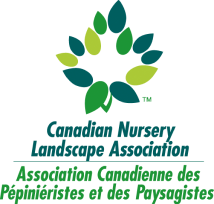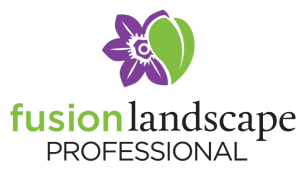Preparing your lawn for the spring season is essential to ensure that it grows lush, green, and healthy throughout the warmer months. Two of the most effective lawn care practices for spring are aeration and dethatching. These techniques help to alleviate compacted soil, improve water and nutrient absorption, and encourage the development of strong, healthy grass. In this post, we’ll explore how aerating and dethatching benefit your lawn, particularly in Green Bay’s climate, and how to get your lawn ready for the growing season.
Understanding Lawn Aeration
Lawn aeration is the process of creating small holes in the soil to allow air, water, and nutrients to penetrate the grass roots. Over time, soil can become compacted, especially in areas with heavy foot traffic or clayey soil. When the soil is compacted, the roots of your grass struggle to access the oxygen and nutrients they need to thrive. Aeration alleviates this problem by improving soil structure and enabling better water infiltration.
In Green Bay’s climate, where cold winters and heavy snow can cause soil to compact, aeration is particularly important. The freezing and thawing cycle can lead to soil becoming dense and compacted, preventing the roots of grass from growing properly. Lawn aeration & dethatching services can help relieve this problem and ensure that your lawn is in the best condition to thrive during the growing season.
When to Aerate Your Lawn
The best time to aerate your lawn in Green Bay is in the spring, once the ground has thawed but before the heat of summer sets in. Early spring, typically from late April to early May, is the ideal window to aerate your lawn. Aerating in early spring allows the grass roots to take advantage of the improved soil conditions during the growing season.
In addition to aerating, lawn fertilization services can be applied shortly after aeration. Fertilizing right after aeration helps ensure that the nutrients reach the roots effectively, promoting stronger growth throughout the season.
Benefits of Aeration
- Improved Water Infiltration: Aerating your lawn allows water to penetrate deeper into the soil, preventing water runoff and ensuring that your lawn gets the moisture it needs, especially during dry spells.
- Enhanced Nutrient Absorption: Aeration enables fertilizer and organic matter to reach the roots more effectively, improving overall lawn health.
- Stronger Root Growth: With better access to oxygen, the roots of your grass can grow deeper, resulting in a healthier, more resilient lawn.
Understanding Dethatching
Dethatching is the process of removing the layer of thatch that builds up on your lawn over time. Thatch is a layer of dead grass, roots, and organic matter that accumulates between the soil surface and the grass blades. A thin layer of thatch is normal, but when it becomes too thick (over ½ inch), it can prevent water, nutrients, and air from reaching the soil. Thick thatch can also harbor pests and diseases that may damage your lawn.
In Green Bay, where cool-season grasses like Kentucky bluegrass and fescue thrive, dethatching in early spring is important to ensure that these grass varieties have access to the nutrients they need after the winter months. Lawn dethatching is a critical part of spring lawn care to keep your grass growing strong.
When to Dethatch Your Lawn
Like aeration, the best time to dethatch your lawn in Green Bay is early spring, before the grass starts to grow actively. If you dethatch too late in the season, you risk damaging the grass, as the roots may not have enough time to recover before summer heat arrives.
Dethatching is especially beneficial for lawns that have experienced a heavy buildup of thatch during the previous year. If your lawn has a thick, spongy layer that makes it difficult to mow or water properly, it’s time for dethatching.
Benefits of Dethatching
- Improved Water and Nutrient Absorption: Removing the thick layer of thatch allows water, fertilizer, and air to reach the soil more effectively, ensuring your lawn gets the nutrients it needs.
- Enhanced Lawn Health: Dethatching helps prevent diseases and pests from taking hold in the thatch, improving overall lawn health.
- Better Grass Growth: By reducing the thatch layer, dethatching helps encourage new grass growth and ensures that your lawn remains lush and green throughout the growing season.
Aerating and Dethatching Together
In many cases, aeration and dethatching go hand in hand. Aerating your lawn after dethatching is a powerful combination that will help your grass grow stronger and healthier. Aeration creates the necessary holes for water and nutrients to enter, while dethatching removes the buildup that may otherwise block those resources.
Many professional lawn care services offer combined aeration and dethatching services. By scheduling both, you ensure your lawn receives the best possible care for the upcoming season.
Conclusion
Aerating and dethatching your lawn are essential steps in preparing your lawn for the spring season in Green Bay. These techniques help alleviate compacted soil, remove thatch, and improve water and nutrient absorption, ensuring a greener, healthier lawn. With professional lawn aeration & dethatching and lawn maintenance & mowing services, you can get your lawn ready for the growing season and enjoy a lush, vibrant yard all summer long.
Focus Keyword: Spring lawn preparation
Meta Title: Spring Lawn Prep: How to Aerate & Dethatch for Green Bay’s Climate
Meta Description: Learn how to aerate and dethatch your lawn for optimal growth in Green Bay’s climate. Improve water absorption, root growth, and lawn health with expert lawn care services.





